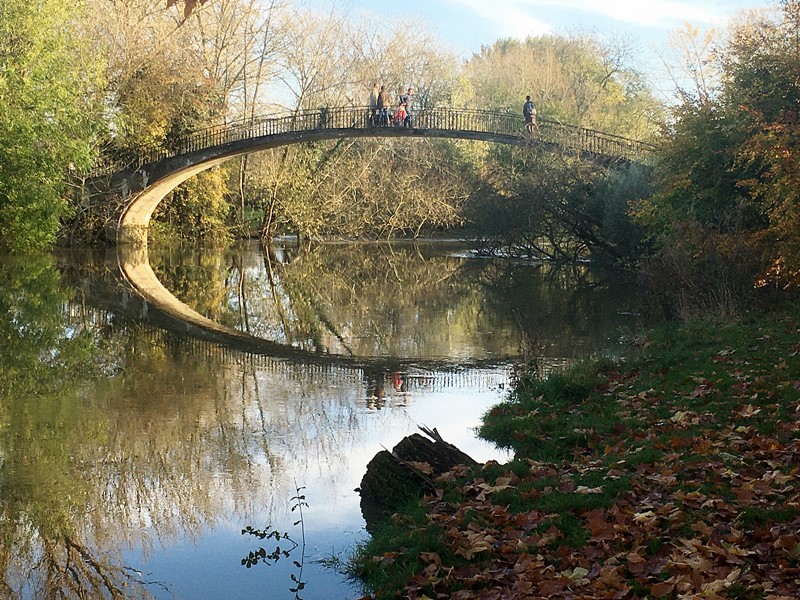
The Rainbow Bridge in the University Parks. The bridge was constructed in 1923-1924 as a project for the unemployed. At the time it was the longest single-span concrete bridge in the world. It has particularly fine views up and down the Cherwell.
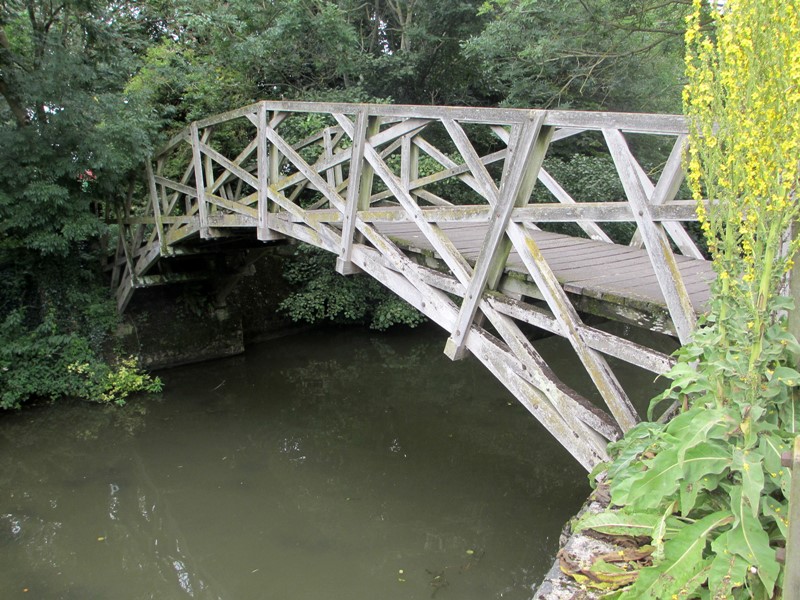
The Mathematical Bridge, built c.1924, is a copy of a similar though longer bridge at Queens' College Cambridge built in 1749. Its structural design is most unusual for a timber bridge; it adopts the principle of an arch, so that short lengths of timber are used to follow the lines of stress.
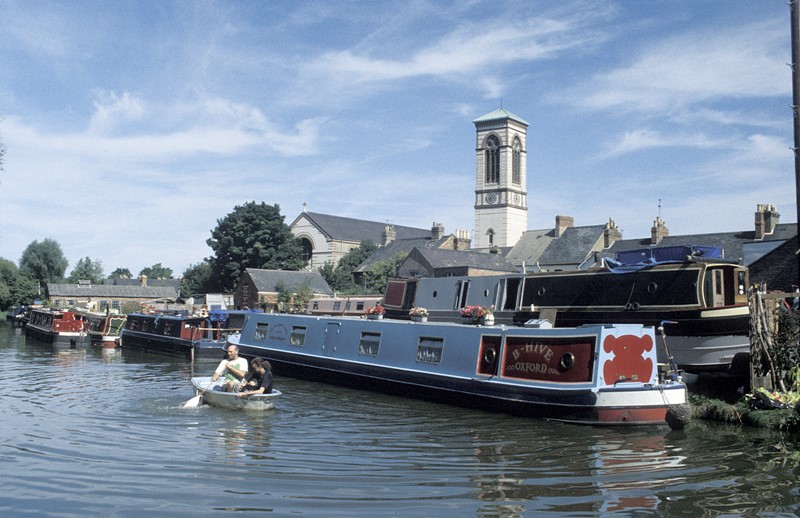
The boatyard in Jericho in the 1990s. This essential facility for the boat owners of Oxford was sold by the canal authority soon after this picture was taken. But the intended housing has still not been built, and a campaign for the reinstatement of the boatyard continues to this day. The church in the background is St Barnabas, consecrated in 1869.
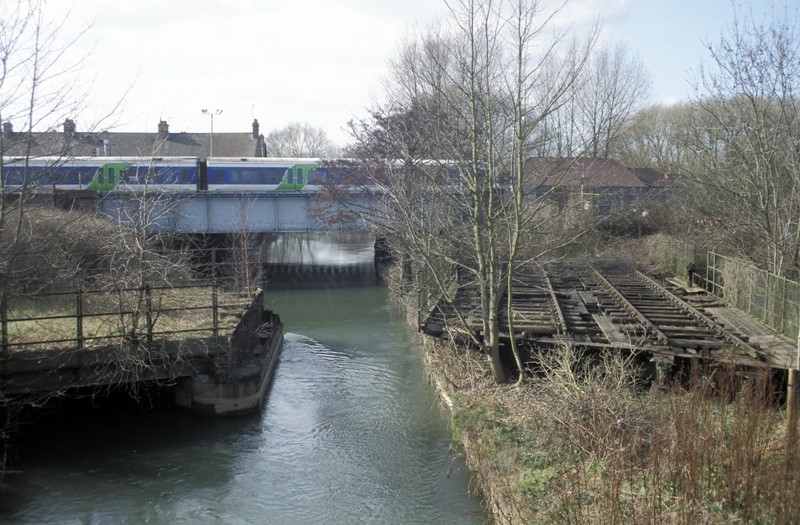
A train crossing a branch of the River Thames called the Sheepwash Channel which connects it with the Oxford Canal. In the foreground is a wonder of Victorian engineering which was still in use in the 1970s: a railway swingbridge. Constructed in 1851, it enabled trains to access central Oxford when the section to the right was rotated to cross the water, and allowed the movement of boat traffic when in the position shown. It is now in the last stages of a complete refurbishment.
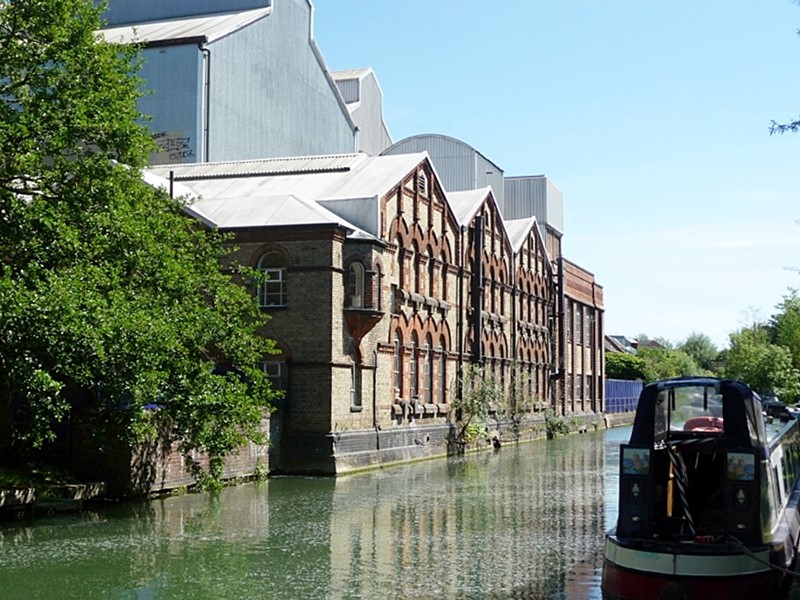
Electric Lighting Station on the River Thames at Osney. A current photograph, with modern additional superstructure above, of a facility which was opened in 1892. The building accommodated steam turbines powered by coal which was delivered by delivered by boat, and continued to operate until 1969. It not only provided the citizens of Oxford with electricity for the first time, but the hot water which was pumped back into the river after cooling the turbines provided locals with year-round washing and swimming options!
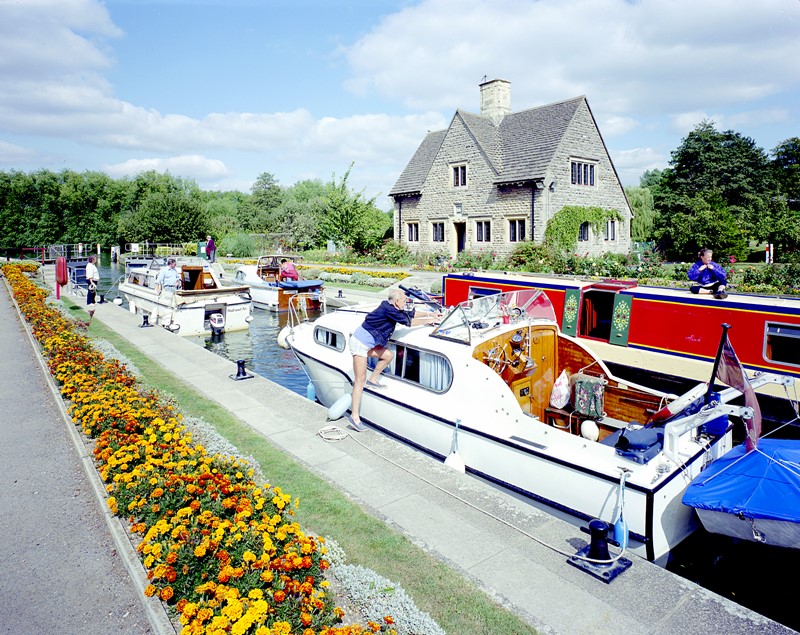
Three river craft and a canal narrowboat in Iffley Lock, a little downstream of the city, 1993. This lock, like most on the Thames, is staffed by a resident lockkeeper, who can be seen, in uniform, opening the automated gates.
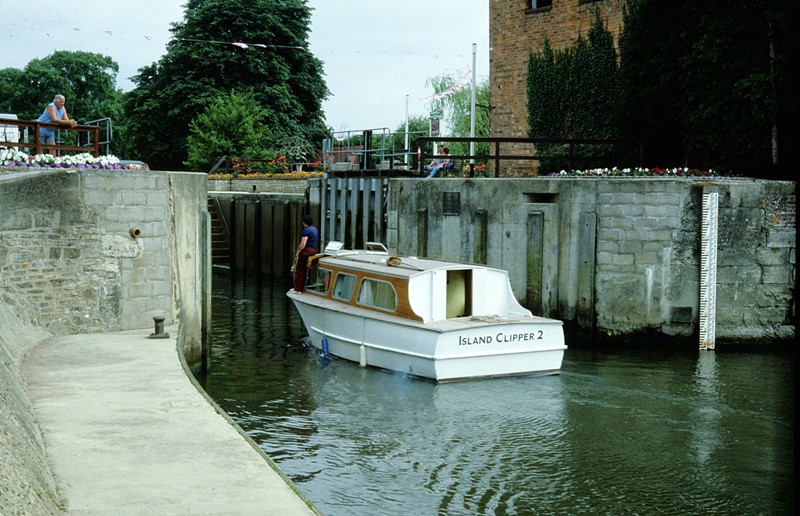
A River Thames hire boat entering Sandford Lock from downstream. Once inside, the gates will be closed, the sluices in the gates (designed to release the water when the lock is full) will be sealed. The lock will then be filled from above by opening the sluices in the top gates. Once the level of water inside the lock is the same as that of the river, the upper gate will open easily, and the boat can continue its upstream journey towards Oxford.
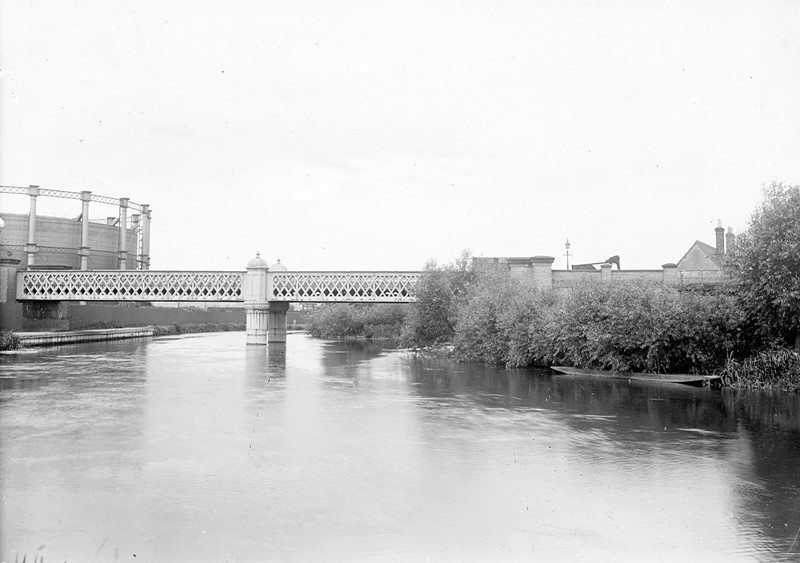
Gasworks Bridge over the River Thames, 1920 (Henry Taunt). The iron bridge was constructed in 1886, to provide railway access for Oxford’s gas works, which employed over 300 people in the 1920s. The last of the gasometers was demolished in 1968. Nowadays the bridge is one of the grandest pedestrian bridges in the country!
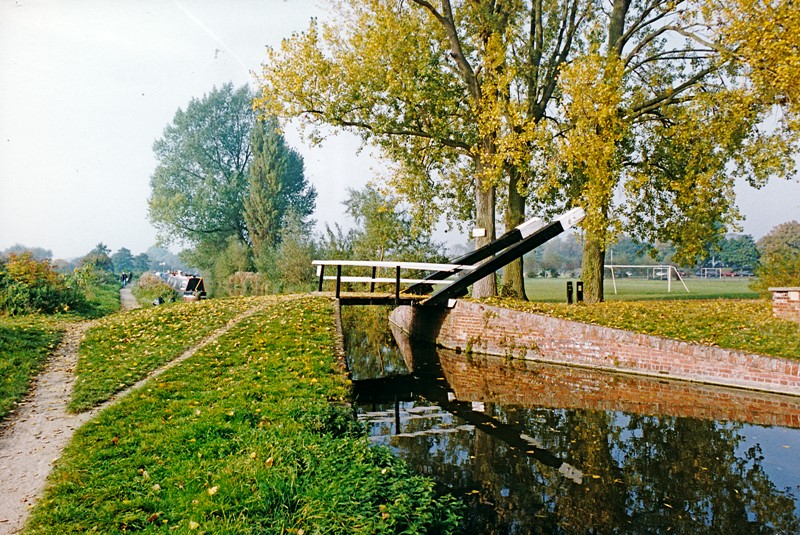
Canal lift bridge, 1994. The Oxford Canal was some 90 miles in length when fully opened in 1790, but the private company which was formed to construct it was running low on funds as the digging neared Oxford. These lift bridges eased the problem because they were much cheaper than bridges made of brick or stone. Mostly designed to provide access for agricultural purposes, they are a distinctive feature of the southern Oxford Canal. The playing fields beyond the bridge belong to St Edward’s School, one of whose most famous pupils was Kenneth Grahame, author of Wind in the Willows.
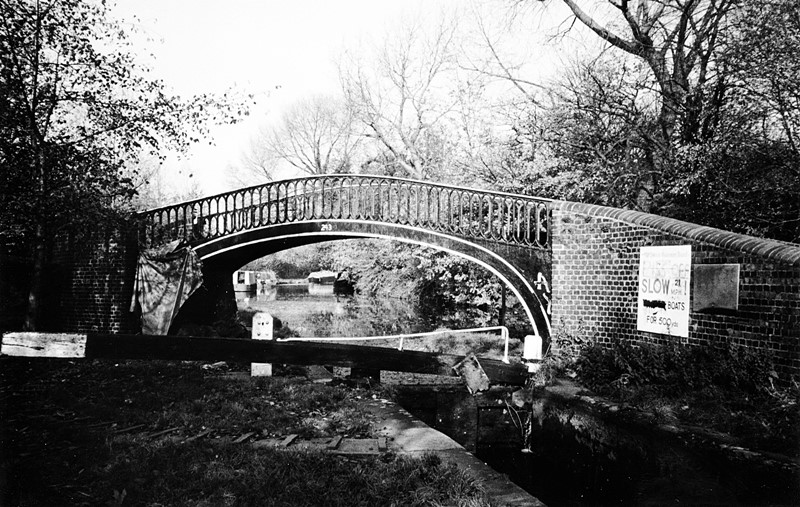
Isis Lock, 1980s. This canal lock links the Oxford Canal with the River Thames, and constituted part of the shortest water route between the manufacturing districts of the Midlands and London when it opened in the 1790s. The lock was originally built by convicts. It was narrowed in 1844, and the beautiful iron bridge erected at the same time. It is skewed to allow easy passage for the horses which pulled the boats until they were gradually replaced by engines from the 1920s onwards.
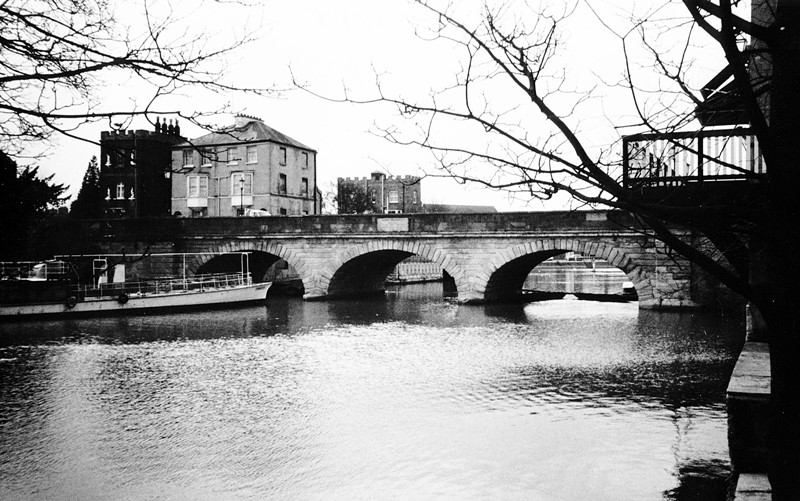
A Salters passenger boat, 1980s, at Folly Bridge. The bridge is the main southerly entrance/exit for Oxford, and the successor to the city’s first Norman stone bridge over the River Thames, hence its more correct name of Grandpont. Established at this location since 1858, Salters originally built small boats, then moved into the provision of passenger services in large vessels such as the one shown. It is still family-owned. The company also hires out rowing boats, motor boats and punts, and in all probability it is Salters from which Lewis Carroll hired rowing boats for his many trips on the Thames with Alice (in Wonderland) Liddell and her sisters.
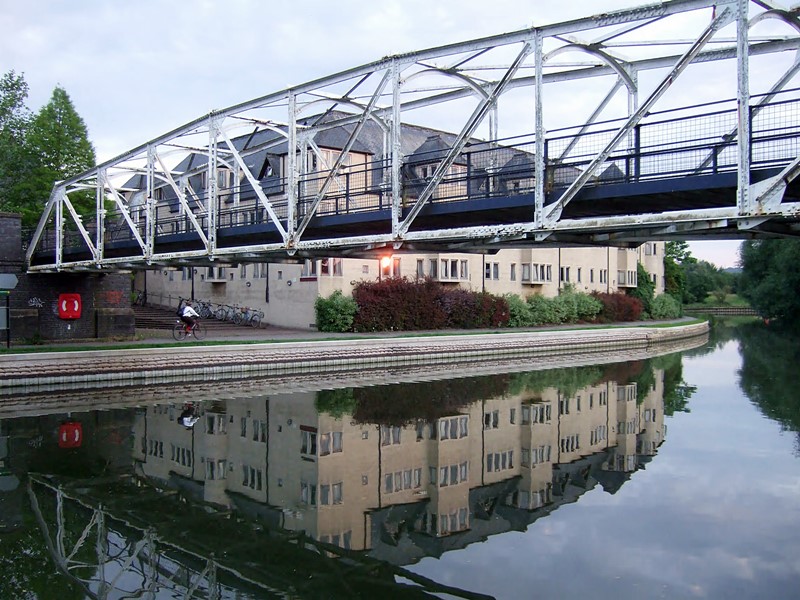
Pedestrian pipe bridge over the River Thames, formerly linking two sections of the Oxford Gas Works site, c. 2005. The cyclist is on the Thames Path, once the domain of tow-horses for Thames barges but is now a 300-kilometre-long public footpath which follows the river from near its source all the way to London.
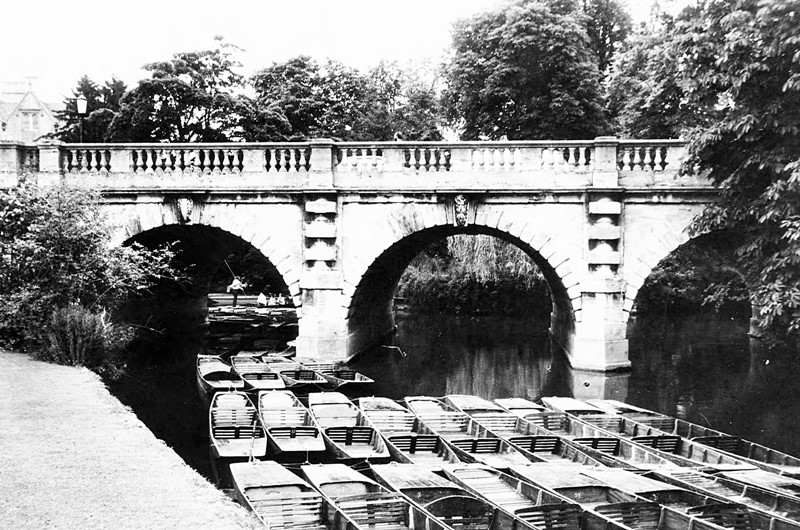
Punts for hire on the River Cherwell below Magdalen Bridge (20th century).
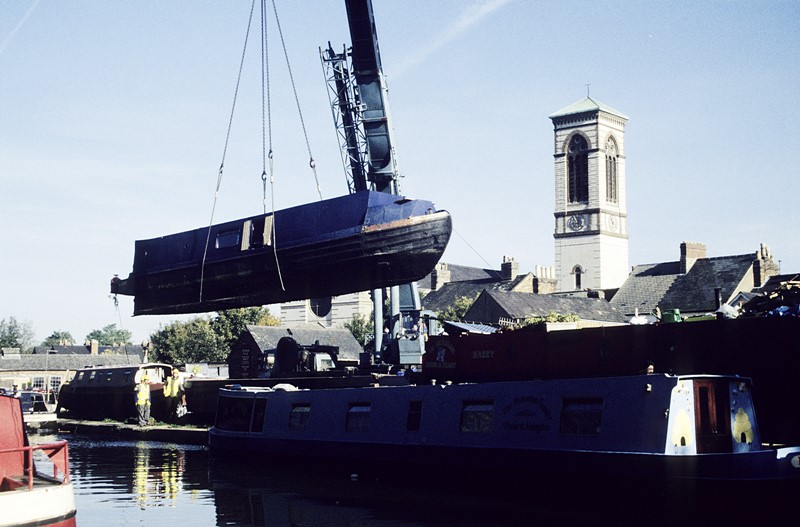
Craning of a narrowboat onto the wharf at Jericho in the 1990s. This operation is essential every few years, in order to assess the condition of the hull, and to protect it with a new coat of rust-resistant bitumen or similar. It is a process known as ‘blacking’.
Sections:
Oxford
Section 4. Constructions: Bridges and LocksFaced with rivers which keep dividing, innumerable small streams and floodplains, Oxford has been building bridges for a thousand years. Magdalen Bridge and Folly Bridge are our essential connections with the rest of the country. In the nineteenth and twentieth centuries many technically ingenious and beautiful bridges were built from a variety of materials. We illustrate some of the most striking examples.
We also have an integrated system of locks. The Thames is controlled by a series of weirs (low dams which allow the water to drop from one level to another). Boats cannot negotiate these weirs, so they have to be helped by means of a lock which uses only part of the width of the river – or the whole width of the canal. [See the image of Osney Lock] We have images showing how a boat enters the lock with the gates closed ahead. Once the boat is completely within the lock, the gates behind it are closed, and water is allowed to pour slowly into the lock below the gates until the boat has risen to the higher level of water. At this point, the upper gates can be opened and the boat is able to move out into the canal or river. If going to a lower level, the enclosed boat slowly loses height as water is allowed to drain out of the lock.